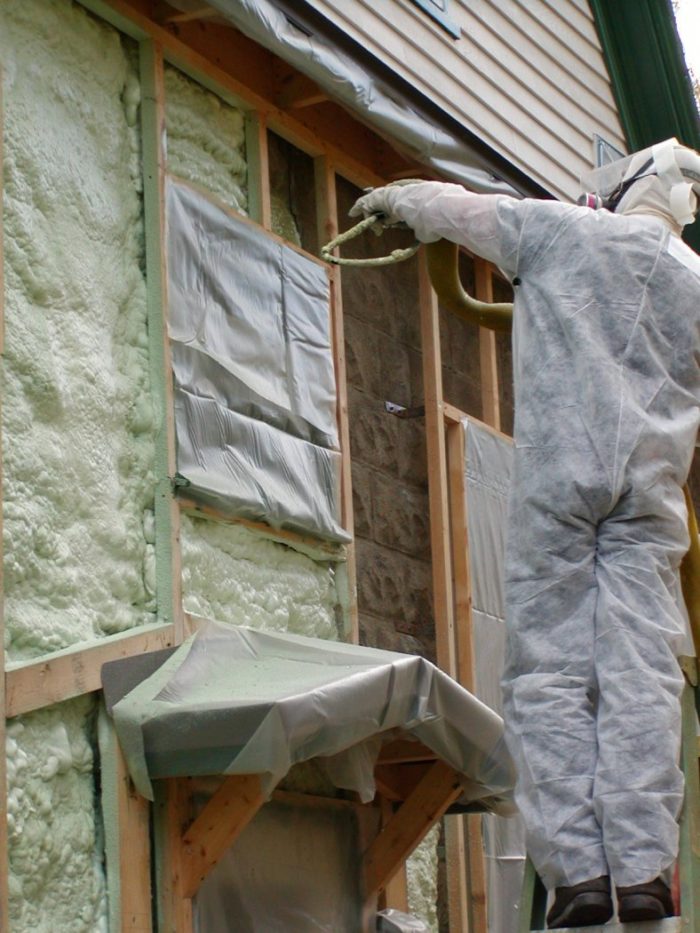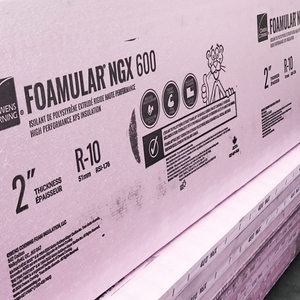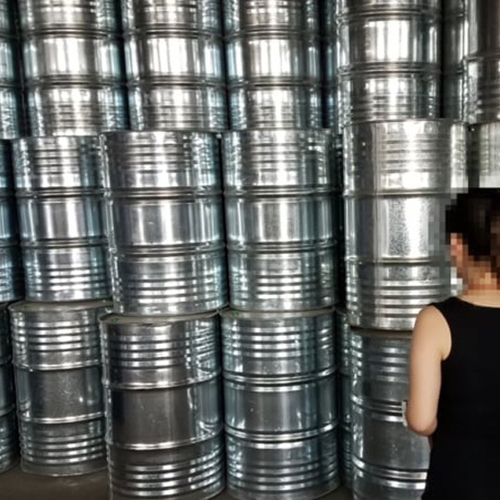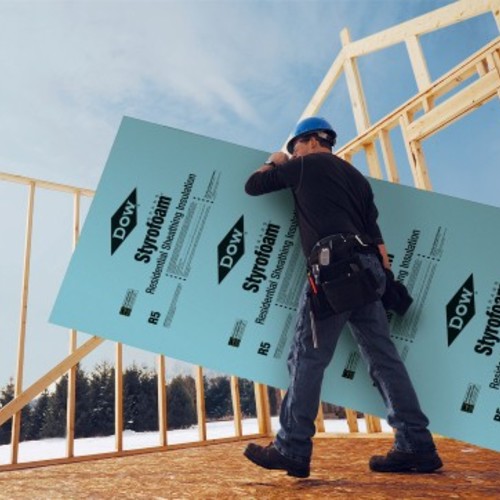Image Credit: Image #1: Peter Yost
Image Credit: Image #1: Peter Yost Honeywell's Baton Rouge, Louisiana, plant is now producing a type of refrigerant and blowing agent for insulation with a dramatically lower global warming potential than the hydrofluorocarbons currently in use.
Image Credit: Image #2: Honeywell
Honeywell says that it has started full-scale production of a refrigerant and insulating agent with an extremely low global warming potential, a development that could make extruded polystyrene (XPS) and polyurethane foams much more attractive environmentally.
The company said in a press release that the compound, called HFO-1234ze, has a global warming potential (GWP) of less than 1, compared with the hydrofluorocarbons HFC 134a (GWP of 1,300) and HFC-152a (GWP of 138) now in common use.
The HFO compound has a GWP that’s equal to or less than carbon dioxide. Other positive characteristics: it won’t contribute to ozone depletion in the atmosphere, it’s not flammable, and it’s not considered a volatile organic compound by the Environmental Protection Agency or the California Air Resource Board, Honeywell said.
Honeywell is producing HFO-1234ze at its Baton Rouge, Louisiana, Fluorine Products facility as part of the company’s Solstice line of hydrofluoro-olefin (HFO) products.
The company announced last September that it would increase the production of low-GWP compounds and cut its annual production of high-GWP hydrofluorocarbons by 50 percent before 2020.
Blowing agents can be a big drawback
Spray polyurethane foam (SPF) and rigid XPS both are widely used forms of insulation in high-performance buildings because of their attractive R-values: XPS has an R-value of 5 per inch, and closed-cell polyurethane foams are rated at 6 or more per inch — both much higher than fiberglass, cellulose, and other insulation options.
The problem with these highly effective types of insulation is that some of the hydrofluorocarbons they’re made with seep out over time.
(Open-cell foams such as Icynene are water-blown so they don’t have this problem, but they also have lower R-values per inch and they don’t block the passage of water vapor, so there are certain limitations to where these products can be used.)
Alex Wilson, writing in a GBA post a few years ago, said that most closed-cell polyurethane foams were made with HFC-245fa, a hydrofluorocarbon with a GWP of 1,030.
Manufacturers are usually tight-lipped about what blowing agents they use, Wilson said, but XPS is probably made with HFC-134a, with a global warming potential 1,430 times as great as carbon dioxide.
“If we’re building highly insulated buildings and doing so in part to mitigate global warming,” Wilson wrote, “we should use insulation materials other than XPS or SPF — at least until these insulation materials are produced with blowing agents that have far lower GWP.”
“The bottom line is that when we insulate our homes so that they will use less energy and thus help to mitigate climate change, we should be careful about which materials we use,” he continued. “Providing high levels of insulation with XPS or closed-cell SPF will counteract a lot of that well-meaning effort.”
New formulations are now possible
That was back in 2010. Wilson said that hydrofluoro-olefins were on the horizon and would probably be available from both Honeywell and DuPont in the future. That moment has arrived.
Sanjeev Rastogi, global business director for Honeywell’s fluorine products, said that the HFO compound has been sold commercially for XPS in Europe since 2009, and is commercially available in Japan as well.
“We are actively working with U.S. customers, but U.S. products are not yet available,” Rastogi said in an e-mail. “We consider any detailed information about our customers and their launch timing to be confidential at this time.”
Rastogi says that use of HFO-1234ze raises the cost of XPS board by 10 percent to 15 percent but also increases energy performance by between 5 percent and 10 percent when compared to XPS made with HFC-134a, a hydrofluorocarbon with a high GWP.
GBA asked both Dow and Owens Corning whether they had plans to use HFO-1234ze in the XPS they make. We’ll update this post with any reply they have.
Weekly Newsletter
Get building science and energy efficiency advice, plus special offers, in your inbox.
















4 Comments
Blowing agent condensation
It looks like hfo1234ze has a boiling point of -2F (-19C) at atmospheric pressure. Below that, it condenses to a liquid. This is the mechanism that has been implicated in reduced performance of polyiso at low temps. My drive to work today was colder than -2F. Could this blowing agent be problematic in cold climates?
Verious comments here and elsewhere have pointed to hfo1234yf as an alternative blowing agent. It condenses at -22F, and is being considered as a potential successor to r134a in cars. This is the first I've heard of anybody using hfo1234ze. That choice seems strange to me. Am I missing something?
Replying to my own post, it
Replying to my own post, it looks like HFC-245fa is even worse in this regard, with a boiling point around 60F. So if HFC-245fa closed cell foams exhibit the same degradation in performance as polyiso (if indeed condensation of the blowing agent is the cause), then either HFO blowing agent is better off.
The polyiso problem is NOT blowing agent condensation.
If condensing blowing agent was any part the story behind polyiso derating at low temps, EPS would have a similar performance curve, since it uses the same blowing agent (pentane).
But it doesn't- EPS performance increases fairly linear with falling temperature over the relevant ranges for building insulation, whereas polyiso does not.
The boiling temp of pentane is about 97F / 36C.
Closed cell polyurethane blown with either HFC245fa or water increases in performance at lower temp, similar to the way EPS & XPS do.
Though they are chemical close cousins, the closed cell characteristics of blown polyiso is much more amorphous and the resulting foam more vapor open than polyurethane of similar density no matter what blowing agent is used. The is one reason why polyiso is commonly sold with low-permeance facers for 1-2lb density goods. Whether the less-well defined closed cell structure and higher fraction of open cells is related to the temperature dependent derating issue isn't clear (not to me, anyway.)
EPS has a higher closed cell fraction than polyiso at any density too, but with either there is very little blowing agent left within a few years of service (the possible exception being very thick foil faced polyiso.) But with HFC-blown 2-3lb polyurethane the half life time constant is a decade or more.
Various HFO1234 variants have been tested for refrigeration & blowing agent applications by multiple vendors (including DuPont and Dow) over the past 4-5 years. Honeywell announced the release of Solstice (their trademarked name for HFO1234ze) a few years ago.to much fanfare, but since US regulations didn't mandate a change from the HFC blowing agents, it hasn't been picked up here the way it has in Europe. If there is any NEW news here, it's that they are now opening a production plant in the US for the first time.
IIRC Dow was blowing XPS with CO2 for the European market for several years, which has a comparable R-value to EPS of similar density & thickness, which made it harder to market in the US. I don't know if they have since switched over to an HFO solution for performance / marketing reasons.
Building Science Corp is allegedly doing some testing on polyiso to get a better handle on temperature derating issues. As of a couple of years ago they had a handle on it's characteristics when polyiso sheathing is the ONLY insulation, which is different from when it's used as insulation sheathing over other higher-R interior layers. The variation in temperature dependency different between manufacturers; samples was pretty significant too- they're not all the same(!), but trying to dig out manufacturing process information from the manufacturers is probably going to be difficult (or impossible.)
Pending EPA regulation and Lapolla spray foam product...
Lapolla (spray foam materials supplier) is advertising a "4G" product that uses Honeywell Solstice.
http://www.lapolla.com/foam-lok-2000-4g/
That might make it available pretty widely pretty soon--it should be possible to specify HFO for spray foam projects by looking for a contractor that uses Lapolla as a supplier.
Also note that a proposed EPA regulation phases out HFCs for most applications in the next few years, with insulation foams coming under regulation as of Jan 2017....with one exception, for spray foam. The reason for that exception is apparently that HFOs don't have long enough shelf life for the small two-part spray foam kits.
(http://www.epa.gov/ozone/downloads/SAN_5750_SNAP_Status_Change_Rule-Fact_Sheet_070714.pdf)
Aaron, very good point about the boiling point. It looks like the HFOs being proposed are about the same or only a little worse than what is used now in that regard. Below are the details for anyone interested (others can stop reading now).
Honeywell lists three: (http://www.honeywell-blowingagents.com/?document=hfcs-under-pressure-for-global-reduction-info-sheet&download=1)
HFO-1234yf, for auto air conditioning and refrigerators (including vending machines, branded Solstice yf. BP -29 C
HFO-1234ze, for XPS, heat pumps and chillers, branded Solstice Gas Blowing Agent, BP -19 C (-2 F)
HFO-1233zd, for spray foam and refrigerator insulation, branded Solstice Liquid Blowing Agent (LBA), BP 18.6 C (65 F)
That makes it sound like zd/ LBA would be a disaster for low temperature use, and ze would be bad in a cold climate, but in fact the polyiso blowing agent that lead to severe problems you refer to is HCFC-141b (see http://www.honeywell.com/sites/docs/D4R4C62BKMK6VRHY90S9M9J5D0M2XOTSY.pdf) which has a boiling point of 32 C (90 F). One replacement that does better on that (but still has high GWP) is HFC-245fa, with a BP of 15.3 C, about the same as HFO zd/LBA. 245fa is also what is used spray foam now.
And XPS now uses HFC-134a (BP -26.3 C) or HFC 152a (BP -25 C). So the HFO replacement might be worse but not much worse for low temperature performance.
Hopefully more data will be forthcoming for all foam insulation materials' performance vs. temp!
One more reference: a summary of different blowing agents and which foams they are used in, from 2011:
http://www.epa.gov/ozone/downloads/EPA_HFC_ConstFoam.pdf
Log in or create an account to post a comment.
Sign up Log in